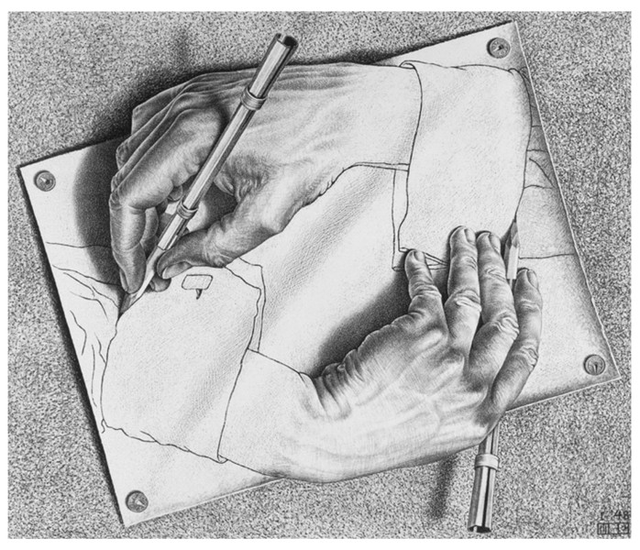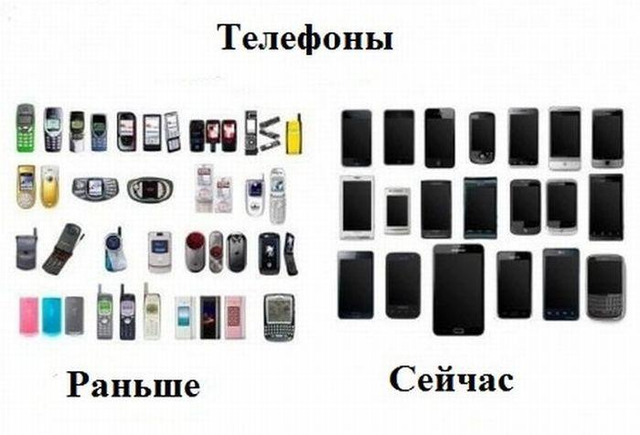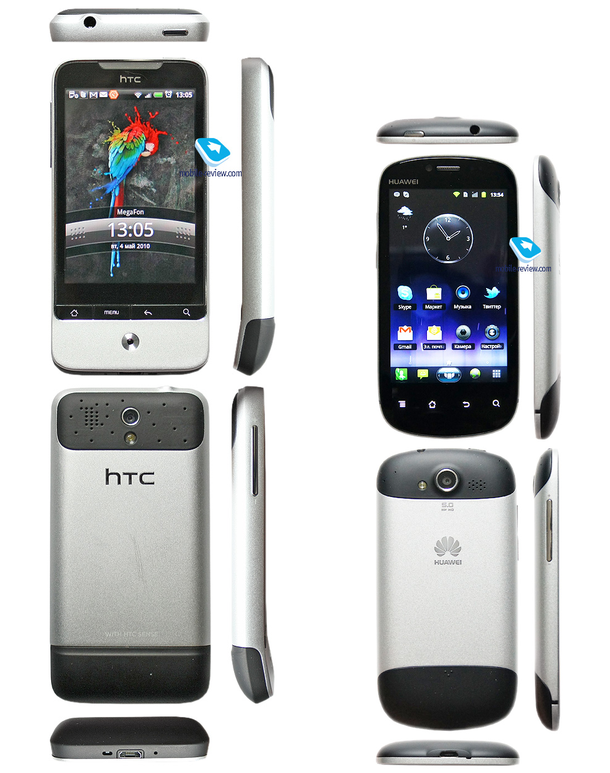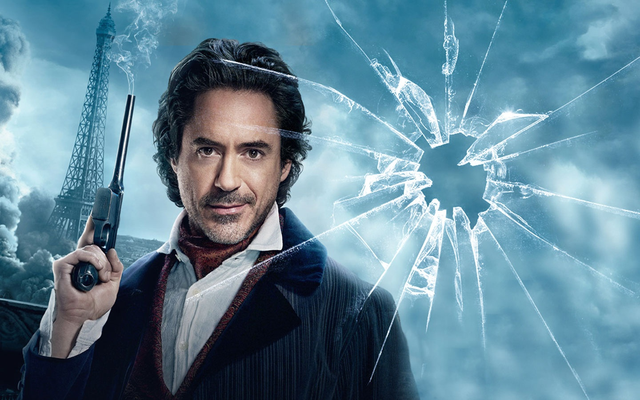The discussion of the announcement of any modern smartphone is certainly replete with messages that the developers have once again copied its design from someone else. Most often we are talking about copying ideas Apple, sometimes other A-brands are also mentioned. Someone is criticized for copying a design more, someone less, but in one way or another, everyone gets it.

Sometimes we are talking about questionable patents on the black rectangle and attempts to sue successful competitors with legal trickery. Sometimes – about real cases of borrowing some design elements, attempts to create a device in the style of another company.
Profession costs
First of all, it should be noted that the designers of the companies were initially placed in a very rigid framework. It’s not that they all so much liked to come up with devices exclusively in the style of “large rectangle with rounded edges”, but only they have no choice. You can argue as much as you like about how convenient 'shovels' with a diagonal of more than 4.5 inches are, but since today it is pleasant to consider them the latest fashion, then even Apple will have to go over their principles. We can talk for a long time about the fact that for the sake of a powerful battery it is quite possible to sacrifice the thickness of the smartphone, and ultra-thin frames around the display are not at all necessary – but since this is contrary to the current canons of beauty, then we will not see such flagships from any large company. There are hundreds of arguments about the benefits of sliders and clamshells – but since the fashion for such smartphones remained only in Japan, no one will do anything like this for other countries.

The second unpleasant moment is the cost of design and the model for promoting budget devices. Once it was customary to endow even the most budget devices with a unique design, but those days are long gone. Now almost every manufacturer has come to the conclusion that it is much more profitable to develop a design for the entire line of devices at once. And the fact that the budget device looks little different from the flagship is even better, because buyers like it.

I am sure that if designers of large companies are untied their hands, then store shelves will again burst with bright, original and completely dissimilar devices. But the production of mobile technology is carried out by commercial organizations that are strictly profit-oriented, and not charitable foundations to support the arts.
Second freshness inventions
If you have already been given the task of assembling a bicycle, then it is better to start by studying the existing developments, rather than trying to reinvent it. The buyer is not interested in who first came up with this or that concept, he needs the finished product to be of high quality and convenient.


 No, this is not the new iPhone 7 Mega Plus. This is Nokia N1
No, this is not the new iPhone 7 Mega Plus. This is Nokia N1
Learning from the mistakes of others is not a shame. It is a shame to sacrifice common sense to personal ambition. There are a lot of examples when obviously working and time-tested solutions were replaced by manufacturers with analogues hastily assembled on the knee just for the sake of not being like everyone else. As a result, an unlucky buyer paid for the attempts of companies to stand out from the crowd at any cost. Of course, first of all, it is about engineering solutions, but this also applies to the work of designers. After all, design is not just the color of a smartphone, it is also the arrangement of elements, ergonomics, durability and practicality of the case and a bunch of other things.
But, alas, in the real world it is sometimes easier to reinvent the wheel than to try to get rid of the reputation of a thief for the rest of your life.
Letters Patents
In recent years, hysterics about the theft of intellectual property and immoral attempts to cash in on someone else's work have not abated in society. As usual, common sense very quickly turned out to be completely buried under emotions, and from a fly they tried very hard to inflate a real elephant. This topic is generally quite difficult, and attempts to replace moral norms with legislative ones have further complicated the matter. In Russia, they come up with a Mikhalkov tax on digital media, in the United States they register patents for black rectangles, in China they simply divide the whole world into friends and foes, implying that anything can be stolen and copied from the latter.

HTC Legend and Huawei Vision. Find 5 differences.
When large corporations try to patent letters of the alphabet and impose dues on everyone who can write, it's not very beautiful, but at least understandable. Money doesn't smell. When mobile buyers and reviewers start doing the same, it's downright strange. Instead of rejoicing in the success of their favorite company and the successful choice of the device, people begin to try to help it sink all competitors, selflessly looking for examples of 'dastardly copying'. Artist A painted a picture with three birches, but everyone knows that before him, artist B had already painted a picture with birches! Thief, plagiarist, mediocrity! What and to whom this will give in the end is completely incomprehensible, the situation when there are more censors than artists is clearly not good for art. Especially if the censors are not trying to figure out what and why they prohibit.
Public domain
There are a bunch of projects in the world where copyright is not applied in the usual way for the average person. That is, no one is trying to patent every line of code, every sketch, and every spoken word. There is a common piggy bank of knowledge, from which you can take anything and whenever you want, the only condition is to always be ready to share your best practices in return.
One example is open source projects like the same Linux. It has different builds (distributions), both commercial and not. By itself, open source does not at all prevent you from selling your applications for money, the main condition is to provide their source code. Very often from one popular distribution kit a new one is born, which then begins to develop in its own way. For example, this is how Ubuntu, based on Debian, was born. And now the differences between them are almost more than similarities. Such a development of events is beneficial to all participants, both users and programmers, because the choice is growing, and the knowledge in the common piggy bank only becomes more.
Anyone can use the common piggy bank, including creating a free copy of a paid program. Such precedents were also, for example, this is how the commercial distribution kit Red Hat Enterprise had a twin brother CentOS. There is nothing reprehensible in this – knowledge and developments in the common piggy bank will not become less from this, no damage to the community is caused by this. The fact that two teams are now working on improving the distribution is only a plus. The only thing they might look askance there is at large companies that take ready-made code simply because they can do it, but at the same time, in principle, bring nothing in return. Having the opportunity to improve existing developments, add something of their own to them, adapt for new hardware, or simply share their views on this or that problem, they do not even try to do this, believing that it will work out anyway.


 Lenovo S90 and iPhone 6. Match? I don't think …
Lenovo S90 and iPhone 6. Match? I don't think …
This is why I don't really like clone devices like Lenovo S90. I can well admit that this is a good, well-assembled device that is really worth its money. But if each company begins to copy the solutions of competitors (and in this case, design solutions), without introducing anything new into them at all, progress will very quickly be replaced by regression. A large corporation is obliged not only to think about immediate benefits, but also to try to look at least a couple of years ahead, to invest in the development of its future. This is not only the key to the success of a particular firm, but also an indispensable condition for the survival of the entire industry as a whole. Otherwise, sooner or later mobile phones will turn into analogs of landline phones, which are changed every ten years, and sometimes they are inherited. And this is unlikely to please any of the manufacturers of mobile devices.
Mobile fashion
However, most often those who are not going to release clones of popular devices are accused of 'dastard copying'. And just pays tribute to fashion, performing a smartphone in a popular style today.
It is no secret that any popular device necessarily influences the development of the entire industry, becoming a trendsetter for a while. Formally, this does not oblige other companies to do anything. No one forbids swimming against the stream – only it is very difficult. And there is a very real chance not only to lag behind competitors, but also to overstrain, leaving the race forever. And the higher the market share, the higher the rates.

Left to right: HTC 8X, Nokia N9, Nokia Lumia
As a result, the temptation to release a device in a popular style is very great. And in principle, there is nothing wrong with that. If customers want to get something in style iPhone, then what is the point of going against them and releasing something fundamentally different? In the end, the tune is ordered by the one who pays for it, and this is completely natural.
Some manufacturers are slightly modifying their corporate identity, adding several new elements to it as a tribute to fashion. Some abandon their developments almost completely, starting to work in the now popular genre. It is the latter that gets the most from the commentators; the decision to abandon the original design is taken with hostility by both fans of the brand and its haters.


 Design evolution Xiaomi Mi: all the expensive leads to iPhone
Design evolution Xiaomi Mi: all the expensive leads to iPhone
Is this good or bad? It's hard to say for sure. Of course, it is always a shame when the world of mobile devices, which has not been too diverse recently, is deprived of another outstanding representative. On the other hand, working in a popular style does not mean that the result will be gray and not interesting to anyone. Moreover, this practice is widespread everywhere and usually does not cause any loud protests and incomprehensible hysterics.
false mirror
Contemporary cinema is an excellent example of this approach. I am not a big fan of modern cinema, I watch a dozen films a year, but even for me it is difficult not to notice that most directors do not feel great reverence for 'someone else's intellectual property'. And it's not even so much about attempts to reshoot already existing pictures (analogue of clone smartphones on another OS), but about the shameless use of other people's images (borrowing design elements from other devices).
For example, there is such a famous fairy tale as 'Alice in Wonderland'. Which, perhaps, not everyone has read, but about which at least once heard something. And there is certainly no shortage of bright characters in it. Who are the Cheshire Cat, the Hatter, the March Hare, the Duchess or even Alice herself, no one needs to explain, everything is more or less in the know. So what prevents you from borrowing these characters from Carroll, but coming up with some kind of story about them, which will have practically nothing to do with the writer's work? From the point of view of Tim Burton – nothing interferes at all.

I don’t want to discuss how successful the movie was (2010 Alice in Wonderland), but it’s not nearly an adaptation of the book. If we consider it in this capacity, then everything will cause questions there: the plot, the place of action, the characters of the characters, the style of the narrative, and so on. And to be honest, I highly doubt that Carroll himself would have treated such a free interpretation of his work favorably. I won't even talk about computer games based on the same 'Alice in Wonderland'.

Creativity of the same McGee is similar to Carroll's books only by the degree of madness and the names of the characters, this is where all the similarities end. And it seems that, according to all the canons, it turns out not just by copying, but by copying absolutely unsuccessful, because the copy is not even very similar to the original. It's not even Lenovo s90, it's a clone iPhone with three SIM cards, a TV and a retractable antenna. Nevertheless, if we consider them as independent works performed in the same style, then everything is by no means so simple.

Exactly the same can be said about a bunch of other films, where the 'Three Musketeers' and stories about Sherlock Holmes got the most. Oh, how much new authors of books would learn about their heroes! And I don't even know which is better when the famous four musketeers return from the afterlife to sing along with their happy descendants the corporate chant 'We are a team!' or when Athos, as a ninja diver, goes to Italy for secret schemes of a combat airship with flamethrowers. Which a little later the whole company will happily drop it on the Louvre.
[iframe url = '// www.youtube.com/embed/mQd3MwT2fAM' width = '640 ″ height =' 360 ″ scrolling = 'no' frameborder = '0 ″ marginheight =' 0 ']
[iframe url = '// www.youtube.com/embed/wbPAWThHPdc' width = '640 ″ height =' 360 ″ scrolling = 'no' frameborder = '0 ″ marginheight =' 0 ']
As for poor Sherlock, he then falls madly in love with Irene Adler, then acts as a crooked-handed thief-loser, then tries to rudely upset the wedding of Dr. Watson, then generally finds himself in the 21st century. You may even get the feeling that the directors of these films themselves also watched only films about the great detective, basically not reading books.

If it was no longer a question of film adaptation of the book and the directors invented the whole story themselves, then why take other people's characters? What prevented you from inventing your own heroes, why was it parasitizing on other people's works? Most likely, everything is very simple – it was easier to take the existing images than to try to explain what kind of disappearing mutant animal it is, what relation playing cards have to the queen's army, and why a rumpled man in a tattered hat is drinking tea with a crazy white mouse. It's easier, more convenient, faster and more reliable. The freedom of creativity does not interfere, and the audience is quite happy.


 Samsung Galaxy S6 and iPhone 6. Clone or not? It depends on which side you look at …
Samsung Galaxy S6 and iPhone 6. Clone or not? It depends on which side you look at …
I don't know how correct this is. But one thing I can say for sure – in itself, the borrowing of popular characters or other elements of other people's works does not make the film either good or bad. After all, you can use them as you like. It all depends on the work of screenwriters, directors, actors, decorators, costume designers and film crew. Somewhere such borrowing turns out to be justified, and the film is a separate work, which is remembered no less than the original story. And somewhere, all this is nothing more than an attempt to cling to someone else's glory, clumsily pulling on pieces of other people's works and blinding out of them something completely crooked, indistinct and with an obvious smell.
It's the same with smartphone design. Instead of looking under a magnifying glass the diameter of the speaker holes and measuring the ratio of the height of the smartphone to its width, it's worth looking at the device as a whole. And already then it was decided how fair the use of this or that style turned out, where it came to the place, and where it did not. Yes, it is a shame when a brilliant landscape painter is forced to sit down to paint portraits, which are trite to sell better. Especially for fans of beautiful landscapes. But this is not a reason to deliberately put an end to all of his paintings. The same Conan Doyle generally considered himself the author of brilliant historical novels, but very mediocre detective stories. He even killed the same Sherlock Holmes several times on purpose in order to definitely end the writing of detective stories. Nevertheless, his contribution to the detective genre turned out to be more than significant, and whether he considered him 'his' or not is the tenth thing. In any case, you and I certainly did not go to waste.

